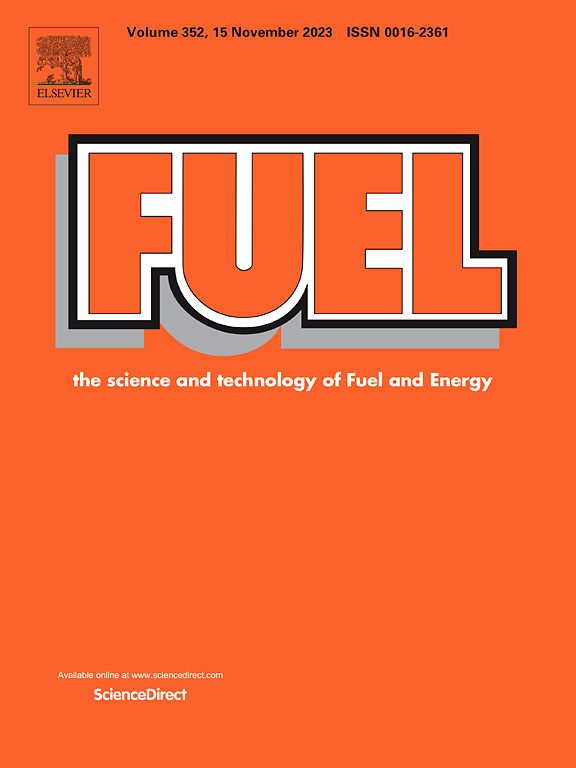用改性WO3催化NH3燃烧,平衡CeOx-CrOx混合氧化物催化剂的酸性和氧化性
IF 7.5
1区 工程技术
Q2 ENERGY & FUELS
引用次数: 0
摘要
本文全面分析了WO3掺入量对CeOx-CrOx催化剂NH3催化燃烧性能的影响。WO3的加入降低了NH3的氧化效率,同时提高了N2的选择性,T90和N2的选择性(350℃)分别从239℃和60%增加到290℃和92%左右。表征研究表明,WO3的引入降低了Cr6+和表面氧的数量和反应活性,从而抑制了NH3对NOx的过度氧化,从而提高了N2的选择性。此外,wo3修饰的催化剂形成了丰富的酸位,保证了充分的NH3吸附,部分抵消了NH3活化降低的不利影响。这解释了W/(Cr + Ce)摩尔比为0.2、0.4和0.8的催化剂T90的边际增加。然而,过量的WO3负载导致NH3的过度吸附,由于电子相互作用或氧化还原位点的阻碍,NH3的活化和过度氧化受到干扰。再加上氧化能力逐渐减弱,这些因素显著阻碍了NH3催化燃烧反应,进一步提高了N2选择性。因此,催化剂的酸性和氧化还原性能的平衡是实现高NH3氧化效率和N2选择性的关键。本文章由计算机程序翻译,如有差异,请以英文原文为准。
Balance on the acidity and oxidizability of the CeOx-CrOx mixed oxide catalyst by modifying WO3 for the catalytic combustion of NH3
This article provides a comprehensive analysis of the impact of WO3 incorporation on the NH3 catalytic combustion performance of CeOx-CrOx catalysts. The addition of WO3 was observed to decrease NH3 oxidation efficiency while enhancing N2 selectivity, with T90 and N2 selectivity (at 350 °C) increasing from approximately 239 °C and 60 % to around 290 °C and 92 %, respectively. Characterization studies revealed that the introduction of WO3 reduced both the quantity and reactivity of Cr6+ and surface oxygen species, thereby inhibiting the over-oxidation of NH3 to NOx and consequently boosting N2 selectivity. Additionally, the WO3-modified catalysts developed abundant acid sites, ensuring adequate NH3 adsorption and partially offsetting the adverse effects of the reduced NH3 activation. This explains the marginal increase in T90 for the catalysts with W/(Cr + Ce) molar ratios of 0.2, 0.4, and 0.8. However, excessive WO3 loading led to the over-adsorption of NH3, which interfered with its activation and over-oxidation due to electronic interactions or the obstruction of redox sites. Coupled with a progressively weakened oxidative capacity, these factors significantly hindered NH3 catalytic combustion reactions and further elevated N2 selectivity. Therefore, it is concluded that the balance of the catalysts’ acidic and redox properties is crucial for achieving both high NH3 oxidation efficiency and N2 selectivity.
求助全文
通过发布文献求助,成功后即可免费获取论文全文。
去求助
来源期刊

Fuel
工程技术-工程:化工
CiteScore
12.80
自引率
20.30%
发文量
3506
审稿时长
64 days
期刊介绍:
The exploration of energy sources remains a critical matter of study. For the past nine decades, fuel has consistently held the forefront in primary research efforts within the field of energy science. This area of investigation encompasses a wide range of subjects, with a particular emphasis on emerging concerns like environmental factors and pollution.
 求助内容:
求助内容: 应助结果提醒方式:
应助结果提醒方式:


